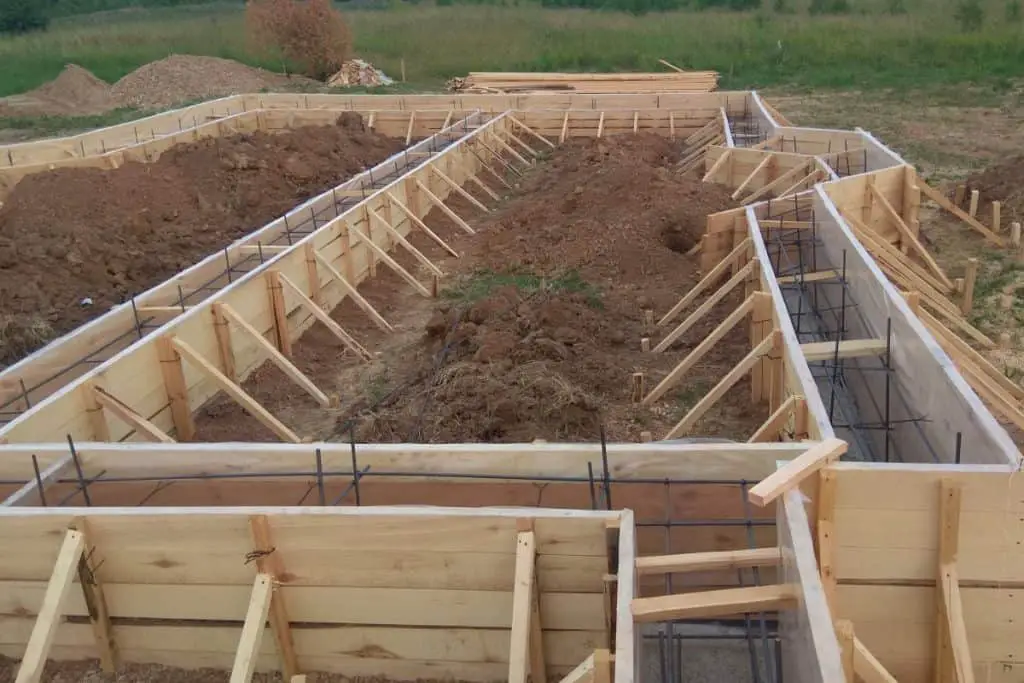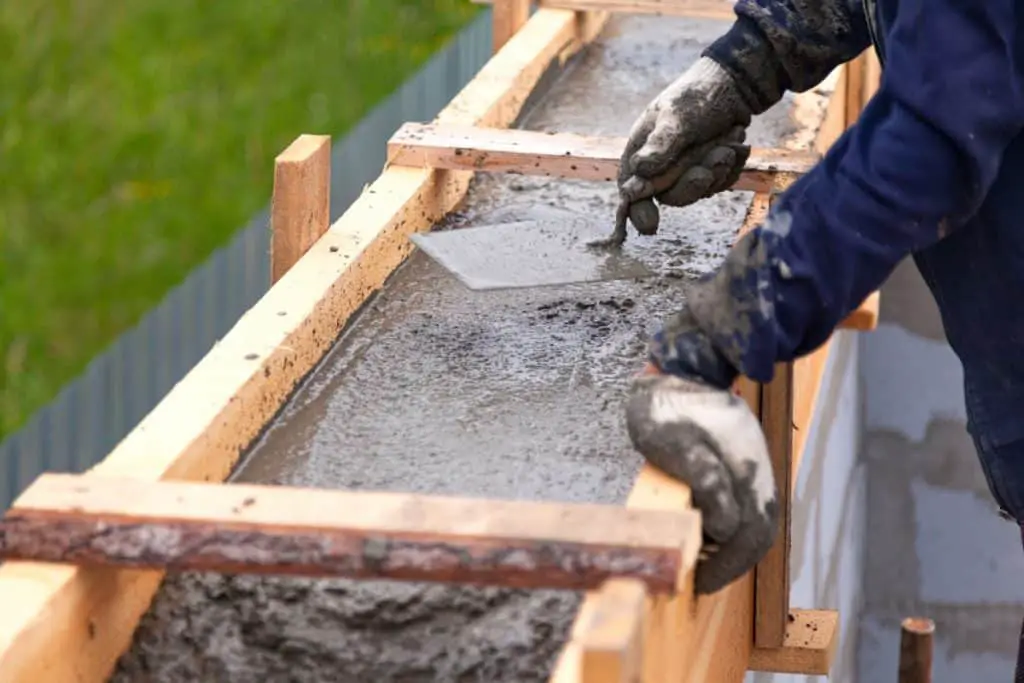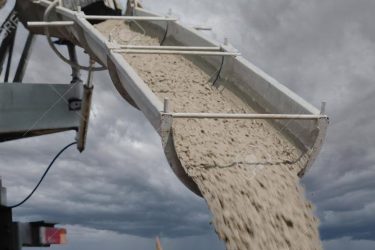The history of concrete form, also known as falsework or formwork, goes back to the days of the Romans who are famous for their use of concrete and cement in their roads. For as long as there has been concrete, there has always been a need for molds that temporarily or permanently hold the concrete in place.
There are many forms for concrete work such as wood, engineered form, re-usable plastic, and permanent insulated. The purpose of the different forms is to hold the semi-solid cement in place until it hardens. Much like different-shaped molds, forms will help hold the cement until it assumes the desired shape.
There are six major types of concrete forms that can be used to hold and mold concrete in place while it sets.
- Wood Forms, otherwise known as “traditional timber” form.
- Engineered Form
- Re-usable Plastic Form
- Permanent Insulated Form
- Stay-in-Place Structural Form
- Flexible Form

Table of Contents
Wood or “Traditional Timber” Form
This form has been used for centuries and is probably the oldest known form for holding cement in place. The most common material used for this form is plywood, though any moisture-resistant wood can work.
The wood is taken and nailed or screwed to wooden or metal supports. Make sure the forms are level and secure when pouring in the cement. If you need a rounded or curved edge, you can use a thinner piece of wood, usually plywood, to form those edges.
To get more detailed instructions, read our guide “Laying Out Concrete Forms: 10 steps for doing it right“.
Before pouring cement into the wooden form, it’s always wise to coat the wood with a low-grade oil or a releasing agent so that the concrete does not stick to the wood. Think of a cake pan lined with cooking spray.
Read more: How to Keep Concrete from Sticking to Forms
Wooden forms are some of the most flexible forms and can be used along with other form techniques. For larger structures, consider using a more sturdy form as it could take too much time or it could break the wood.

Engineered Form
Because wood tends to warp and shrink, you might need stronger material such as steel or aluminum. But this kind of form can be made from different types of engineered materials as well. This type of form also tends to be more expensive than using traditional timber.
Using an engineered framework can save you time in the long run. For example, the time you take setting up the form or when taking it down is decreased versus when you use traditional timber.
In addition, engineered form tends to be safer to use as well. There are safety features built into it, so you don’t have to worry as much about whether an accident will occur if used properly. Under proper maintenance, your form is also re-usable while wood is generally not.
When choosing between using wood or engineered forms, consider the size of the project. You would tend to use the engineered form for larger projects and wooden forms for smaller projects.
Re-usable Plastic Form
Use the re-usable plastic form to help form concrete columns, pillars, and even foundations. Most of the time, these forms are modular, which means that they can be shaped into different shapes for a variety of construction needs.
A company by the name of Geoplast Global sells plastic made out of ABS or acrylonitrile butadiene styrene. The strength of the plastic helps form thick or high walls when you’re setting up your form. The plastic is lightweight, powerful, and easy to manage on-site.
You can reuse these types of plastic upwards of 100 times. Most plastics also are made out of a certain material so that the concrete doesn’t stick to it. That way, all you would need to do is clean off the form with water.
Geoplast Global offers a variety of different forms for every construction project. And since it is re-usable plastic, it is safe for the environment as well.

Permanent Insulated Form
The permanent insulated form is assembled on the construction site to make a system that uses insulating concrete frameworks (ICF) to support the concrete while it’s being cast. You don’t take this form out after the concrete has set. Rather, these stay in place and reinforce the concrete with thermal insulation
This form has a variety of uses. It can stay in place inside roofs, walls, or floors in houses or buildings. This is another cost-effective way to construct a variety of structures. The form is fire-retardant and can also add to the acoustical features of the building.
Insulating concrete frameworks are compatible with any type of foundation, partition, or roofing system. It is economical in that it holds high standards of structure and energy.
Stay-in-Place Structural Form
This form almost speaks for itself. Normally, you use tubular forms (like plastic) that are assembled into the shape you want the concrete to be in. Once the cement is poured, the plastic remains in the concrete and acts as reinforcement even after the concrete is cured.
The materials don’t corrode and are durable. They are used in pile caps, walls, footings, bridges, dams, tunnels, and foundations.
Here is a list of the different types of materials used for this form:
- Polyvinyl chloride (PVC)
- Fiber-reinforced polymer (FRP)
- Galvanized coiled sheet
- Fabricated steel
- Carbon/Epoxy thin shell
Flexible Form
As opposed to the previous forms where concrete is poured into rigid molds, the flexible form uses tough sheets of fabric that have high strength and can be formed and optimized into fluid shapes and forms.
Once the concrete is poured on to flexible form, it usually takes 24 hours before removing the form. Be sure to look at your state’s laws and department of transportation since regulations vary, but in general, you are required to wait between 1-7 days for the cement to set.
Related article: How Long to Wait Before Removing Concrete Forms
This can be for projects where you want to create something interesting or more fluid, architecture that cannot be cast within rigid forms. Using this form saves you time with projects that require complex structures.
All in all, if you’re about to start working on a concrete project, you owe it to yourself to get to know the various types of forms there are and use at least one of them tailored to your particular project. Knowing about each form will help you save time and money in the long run.




